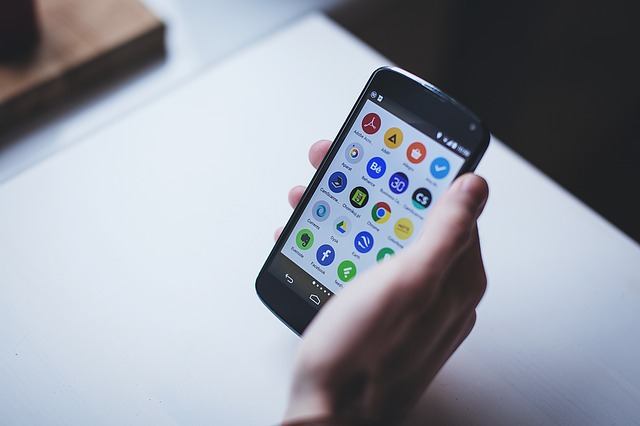As of June 2016, Statista reported there are 2 million iOS-compatible mobile apps available for download in the iTunes store. That same site also reported there are over 2 million Android apps available in Google Play. There’s an average of 50,705 new applications and 19,130 new games submitted to Apple each month. That’s a lot of competition for premium placement in these stores – which are basically the malls of the tech world.
Getting your app featured in either store is a huge win in terms of klout and exposure, but it’s no easy feat. While there are different strategies to consider for getting featured in the App Store versus getting featured in Google Play, there are many overlaps. But using these top ways to get your app featured in the App Store or Google Play – with some bonus tips unique to each one – should give you an edge over your competition.
Design a quality app
Building a quality app seems like a no-brainer, but it couldn’t be more important. If your app is full of bugs or is designed poorly, not only will you miss out on being featured, you’ll have a hard time getting or keeping users. Does your app solve a problem? Is it useful? And once people have it, is it easy to use? Will it keep people coming back? Quality apps are built on the basis of good market validation and then support users with good design.
Design for the mobile user
Google Play and Apple are only interested in featuring the best apps – and the best apps are designed for the mobile user. User-centered design is just like it sounds – all about the user. In user-centered design, extensive attention is given to the needs, wants, and limitations of the end user. (And hint: In most cases, you’ll be designing for the lowest common denominator, because you want everyone, from regular mobile app users to your grandparents, to be able to use your app.)
If your focus is on business goals or fancy features, you are likely to end up with an app that is not that easy to use once it’s in the hands of the intended user. If you design from the perspective of your user, you end up with an app that works intuitively and will be adopted by users more easily. This is what makes apps popular. An app design that uses beliefs, expectations, attitudes and behaviors of its users rather than expecting its user to adapt to the app will always win.
Be unique
Don’t be a copycat. As with anything you do, you should research your competition. Know what apps already exist in your category and build something that is unique and different.
Build strong use cases
A use case is a profile of your intended users – your target audience. Use cases are an important part of development. They are your customer profiles, just like you would create when figuring out marketing strategies. You should ideally have one or two use cases identified before you even begin development. These use cases will help you design with the user in mind – which is why these use cases need to be strong. They will also help avoid creating a long wishlist of features that aren’t essential (or worse, are useless) to the user and end up costing unnecessary time and money.
Use cases will also help you when it comes time to pitch your app, write your app descriptions, and market your app.
Don’t neglect icon design
Icon design is important. Your app’s icon is a representation of your app – it’s the first thing users see. Make it pop with color or a design that makes it stand out from other apps. The App Store in particular takes note of good icon design, because it’s an indicator of the overall look, feel, and design of the app.
Craft a pitch and then start pitching
Your pitch is a big part of getting featured, because you get to tell your story, talk about your expertise, and connect with the person you’re pitching. You will need to pitch to the app stores, as well as to industry websites. The more press you get, the more users you’ll get. Press attention also serves as social proof to Apple and Google that your app is getting noticed and is worth checking out. They pay attention to industry websites to make sure they are featuring the best of the best.
A good pitch conveys your passion, tells your story, and shows off your expertise, so spend some time crafting the perfect pitch.
Pay attention to what time of year it is
Just like a good marketer would do, app stores pay attention to seasonality. They want to make sure they feature apps that people are interested in when the time is right. So, if you have a shopping app, the time leading up to the holiday season is a good time to pitch it to iTunes and Google Play, so you’re ready at that moment when customers are ready to shop. If you have a tax app, just before tax season is the perfect window for your pitch – so you’re up and featured come tax season.
Be ready
You should be ready to roll when you get the word from Apple or Google that they are interested in featuring your app. Make sure you have promo art, screenshots, an icon, videos, a description, and metadata ready to roll.
Pay attention to ratings
Your app isn’t going to be featured if it has terrible ratings, so make sure your ratings stay at 4.5 to 5 stars. How do you do that? First, by creating a quality app that was designed with the user in mind. Here are some other ideas:
- Make sure your app is free of bugs.
- Offer in-app customer support so if a user does have a problem, it is quickly and easily taken care of. This will avoid a one- or two-star backlash.
- Beta-test your app before releasing it.
- Prompt users to rate you within the app.
Don’t make being featured your only goal
Just because your app is featured does not mean it will be a success. Sometimes apps that are featured are popular for a bit and then die a slow death. Your priority should be to design for the user. Create something that is of value and that solves a problem and put in the work to ensure that your app has staying power.
Apple iTunes-specific tactics
There are a few ways to be featured in the iTunes store: being featured on the homepage, hitting one of the top lists, or being chosen as an “Editors’ Choice”. If you want to get into any of these spotlights, you’ve got to know Apple’s guidelines for designing for iOS. Apple tells would-be app designers that they evaluate iOS apps using these three criteria:
- Clarity
- UI deference
- Depth
These are the things Apple says “differentiate iOS from other platforms”. Know these guidelines before you start building and, as we mentioned earlier, build a native iOS app. Naturally, Apple will want to feature apps that show off how great their iOS platforms are.
Another way to ensure you are picked over another app is to design a Universal iOS app – an app that can be used across Apple devices. Think about it – why would they feature an app that only works on the iPhone when they could feature one that works on iPhone, iPad, iPad Touch and Apple Watch?
You should also pay attention to what’s happening at Apple. What APIs are they paying attention to? What features are they releasing? The best way to do this (and network with Apple people) is to attend WWDC.
Apple employees are always engaging in developer communities and reading industry sites and blogs. When you start pitching your app, add these sites to your pitch list:
Cult of Mac
iMore
Product Hunt
AppAdvice
App Store Apps
Google Play-specific tactics
Just like Apple, Google Play has its own guidelines to follow. When you begin building your native Android App, make sure you know Android’s app development best practices. Also like Apple, Google Play is going to want to feature apps that show off the features that make Android so great.
When it comes to checking for bugs, make sure you test your app across all Android devices to ensure there is a consistent experience. A consistent experience is something Google finds important.
Google also loves it when apps support multiple languages. The company even offers resources to ensure that developers can support multiple languages, so take advantage of the resources and make an app that’s localized that they can feature in multiple areas of the world.
Keep these top ways to get your app featured in the App Store or Google Play at the top of your mind when designing your next app, and you’ll have a better chance of getting that coveted featured position in the iTunes AND Google Play store!






